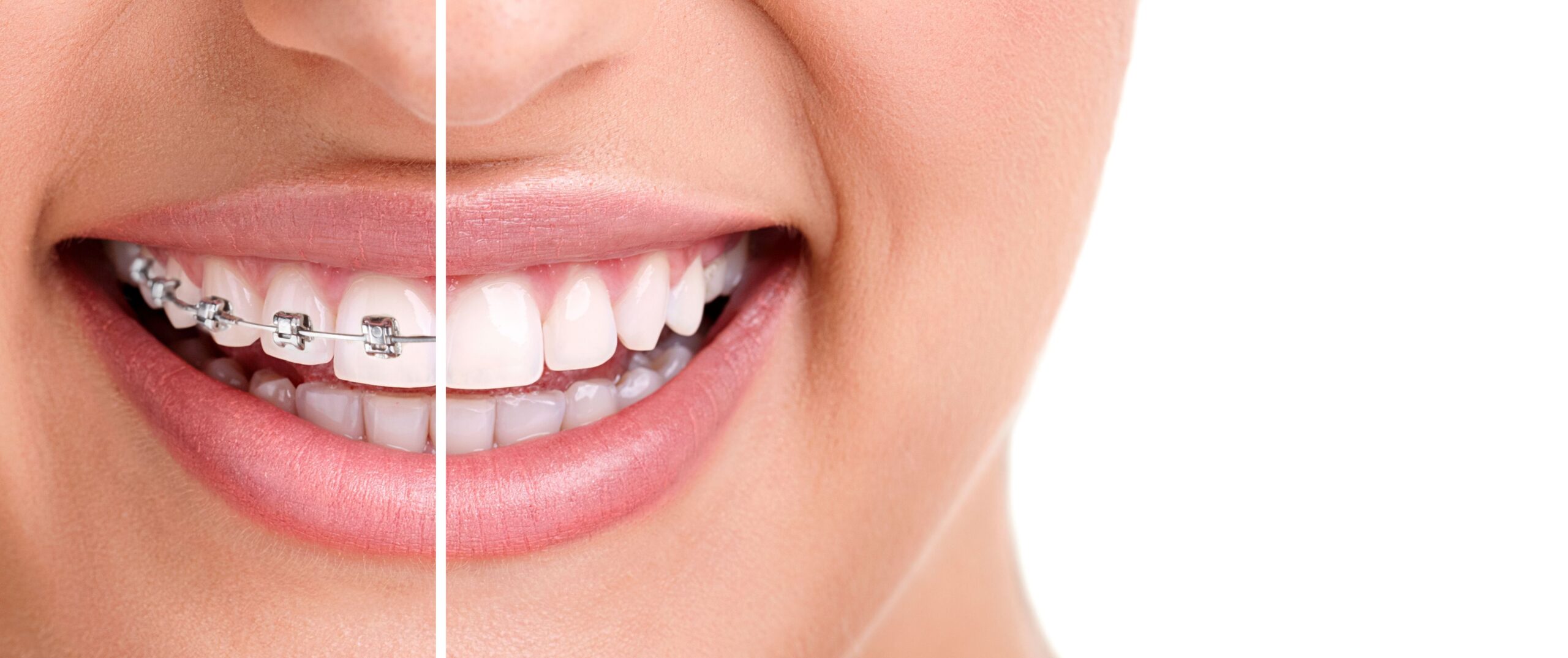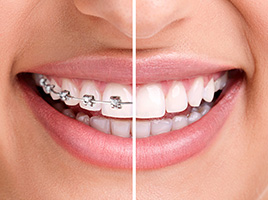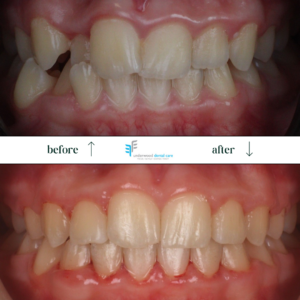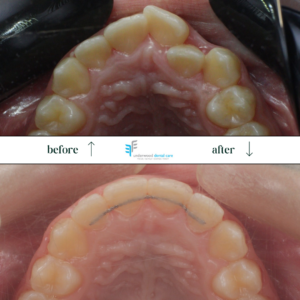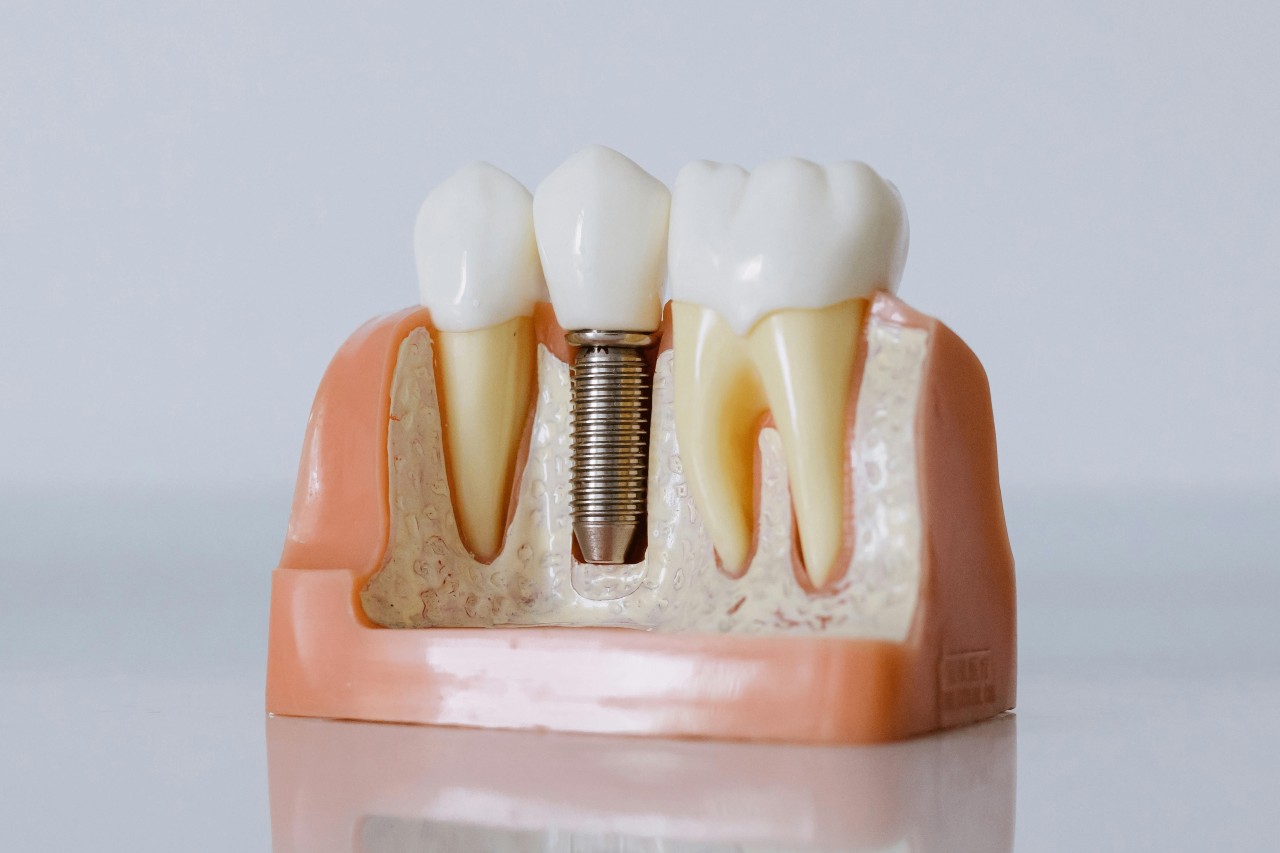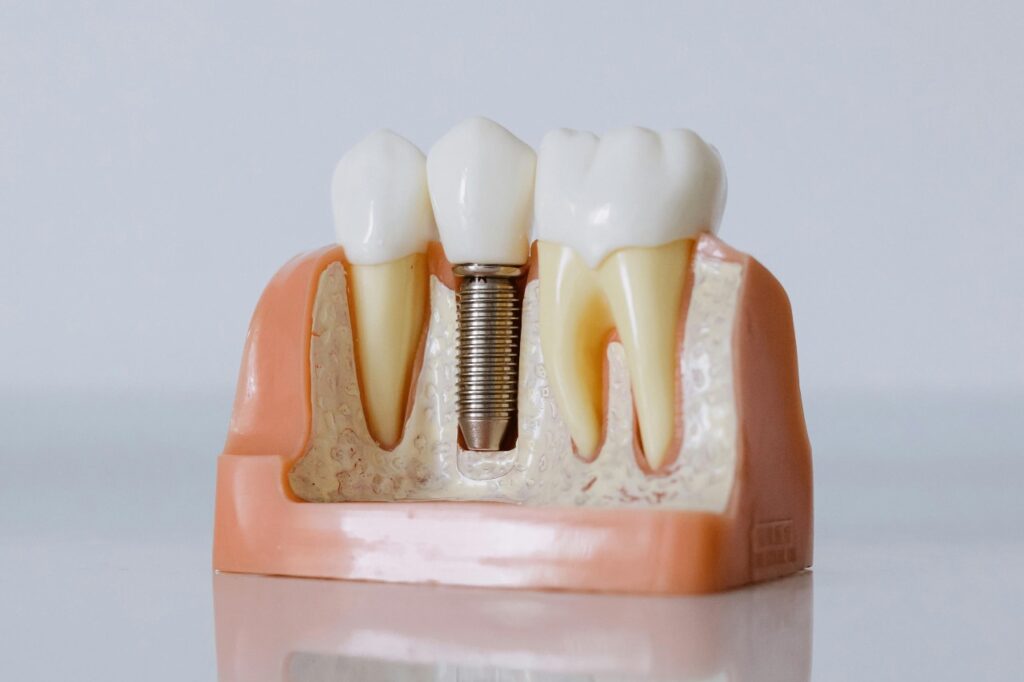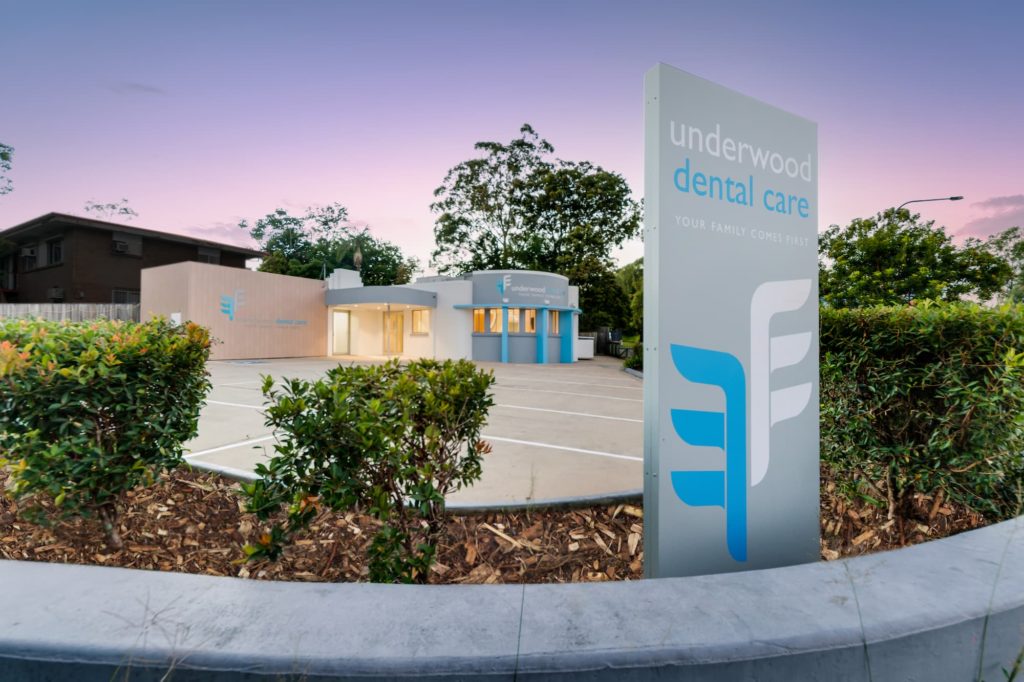If you are missing a tooth and considering your options for replacement, one of those options might be a dental implant.
It’s only one tooth though right?! Maybe a cheaper option would be just as good.
In this article, I will explain why I think the best dental outcome when replacing a tooth is almost always achieved with a dental implant. I’ll also give an overview of what to expect with the procedure if you do choose to get a dental implant for a single tooth.
Let’s get into it!
Why Replace a Missing Tooth?
If you have a missing tooth that isn’t visible when you smile you might think it’s not really a big deal just to leave a gap and carry on with life. Unfortunately, that gap can very often lead to a series of negative repercussions over time.
What tends to happen when a gap is present is the neighbouring teeth shift towards the gap which in turn causes misalignment. We commonly describe this situation like books on a bookshelf. If you remove a book in the middle, books on either side may collapse into the space. Still not a big deal you might think but that’s just the start.

That misalignment can lead to bite issues, making chewing uncomfortable and increasing wear on remaining teeth. The movement of teeth can also make cleaning hard which increases the risk of cavities or gum disease.
Also, the jawbone where the tooth is missing can deteriorate because it is no longer stimulated by the chewing action. Deteriorating jawbone can cause a range of issues:
- Sagging of the face and change to your smile
- Uneven pressure on jaw joints
- Jaw pain & headaches
The onset of the above issues takes time but will generally continue to worsen over time if left untreated. That’s also why we try to avoid tooth extraction and save a natural tooth with a root canal treatment when possible.
Not every missing tooth will require replacement to avoid dental issues. However, unless you have specifically been advised that is the case I recommend consulting with a dentist for advice.
What Options are there to Replace a Missing Tooth?
The three most commonly available options for replacing a single missing tooth are a partial denture, a dental bridge, or a dental implant. Below is a quick overview of those options and the pros and cons.
Partial Denture (For Single Tooth)
A removable appliance containing a prosthetic tooth to fill the gap of the missing tooth.
Pros:
- The most affordable option
- Non-invasive treatment that is quick to make
Cons:
- Doesn’t look as natural as other options
- Can be uncomfortable and takes getting used to
- Needs to be removed regularly for cleaning
Dental Bridge
A prosthetic device with a false tooth is attached to teeth on either side of the gap.
Pros:
- More durable than a denture (lasting up to 15 years)
- More natural looking than a denture
- More affordable than a dental implant
Cons:
- Neighbouring teeth require a thin layer of enamel to be removed
- Increased risk of decay or sensitivity with neighbouring teeth
- Root of missing tooth is not replaced so jawbone isn’t stimulated
- Potential food or plaque build up under the bridge, which may result in failure of the bridge if not cleaned well regularly
Dental Implant
An implant (typically made of titanium) is placed into the jawbone to replace the root of the missing tooth and then finished with a crown.
Pros:
- Highly durable, permanent solution
- Natural looking
Implant replaces tooth root so jawbone continues to be stimulated
Cons:
- Higher upfront cost
Longer treatment and healing time - In my opinion, the above options are listed in the order of good, better, best.
The Advantages of Choosing a Dental Implant
A major advantage of using a dental implant to replace a missing tooth is the preservation of your natural dental structure.
The implant itself is typically made of titanium, a biocompatible material that will integrate seamlessly with your jawbone (osseointegration). This helps maintain the health of the jawbone and prevents the bone loss that often occurs with missing teeth.
A dental implant is the only option of those I listed previously that replaces the root of the missing tooth and continues to stimulate the jawbone.
Unlike traditional bridges, it doesn’t require any filing or grinding of the neighbouring teeth, so that reduces the risk of long term issues for neighbouring teeth.
A significant advantage of dental implants is their ability to restore your natural bite force whereas removable dentures can’t restore that function with the same effect.
Dental implants with proper care can last a lifetime, making them the only permanent solution. Bridges or dentures will need repairs and adjustments.
A single tooth implant not only restores function, it’s aesthetically pleasing, and longer term helps to preserve your overall oral health.
That’s why a dental implant is the best way to replace a missing tooth in almost all cases.
The Dental Implant Procedure - A Brief Overview
Step 1 - Consultation
The first step to getting an implant is a consultation with your dentist. Your dentist will likely take x-rays to assess the condition of your jawbone. If there is sufficient healthy jawbone, your implant can be planned and made.
Planning and design for the crown can also be done at this stage. Once this consultation is complete you will be provided with a quote to complete your dental implant procedure.

Step 2 - Implant Placement
Under local anaesthesia, your dentist will insert the titanium post into your jawbone. Once the local anaesthesia has been applied the treatment is pain free.
The post serves as the root for the new tooth. Some time is then allowed for a healing period to allow osseointegration, where the implant fuses with your jawbone.
Step 3 - Abutment attachment & Custom crown placement
After the healing period is complete, an abutment can be attached to the implant post, followed by a custom crown.
The crown is designed to neatly match your neighbouring teeth in colour and shape. The crown will look and feel exactly like a natural tooth.
The dental implant process, including healing time, usually takes 4-6 months to complete. In some instances, we may suggest delaying the placement of the crowns on healing implants up to 9-12 months!
Maintaining a Dental Implant
Caring for your dental implant is really no different or harder than caring for your natural teeth. Be sure to brush regularly, floss regularly, and book routine dental check-ups.
By caring for your implant you can expect great long term performance and oral health.
What About the Cost of Dental Implants?
As mentioned earlier, the up front cost of dental implants is the highest of the options discussed.
Costs for a single tooth implant can vary widely based on several factors, including complexity of the case, your location and the expertise of the dentist.
For a more detailed explanation of those factors check out this article on the costs of dental implants in Brisbane. The price for a single tooth dental implant in Brisbane, including the crown, is often in the range of $3000 up to $12000.
At Underwood Dental Care the majority of dental implant cases we complete for patients are in the range of $4500-$6000. We use state of the art technology, high quality materials, and your implant will be planned and fitted by a highly experienced dentist.
Health Insurance and Payment Plans
Private health insurance plans typically do not fully cover dental implants, though quite a few funds offer partial coverage. You can contact your health fund to check your coverage before or after your initial consultation.
At Underwood Dental Care we offer payment plans to make dental implants more accessible for anyone who would like to pay over time.
A dental implant is a significant investment. When you consider the many long-term functional and aesthetic benefits, it’s an investment well worth considering.

Book a Consultation
If you have a missing tooth and would like to see if a dental implant could work for you, we welcome you to visit us at Underwood Dental Care.
At your consultation, you can get all your treatment options explained, ask any questions you have, and get a precise quote for your chosen treatment option.
Article by Dr Ben Thai (Principal Dentist at Underwood Dental Care)
You can follow Dr Ben Thai on Instagram ![]()


